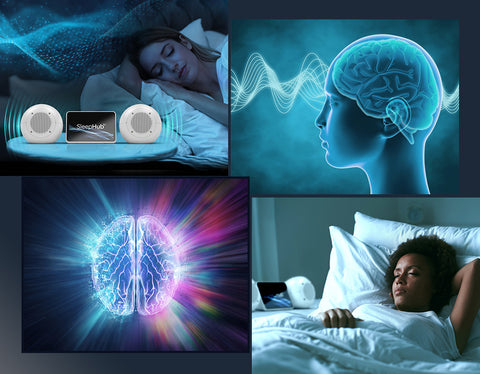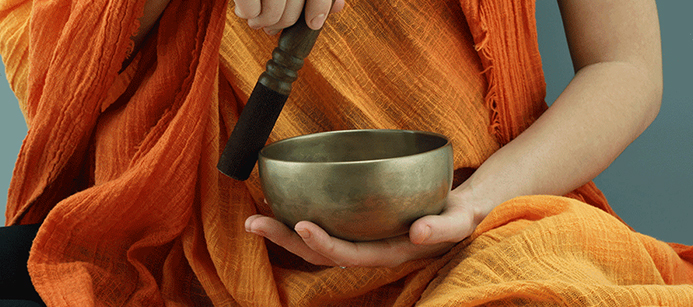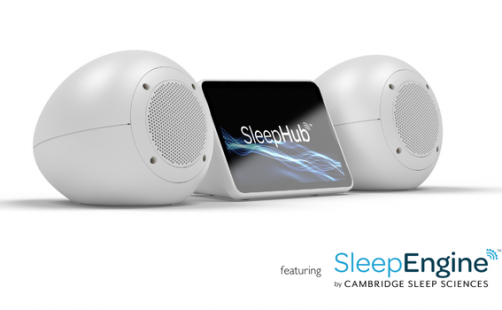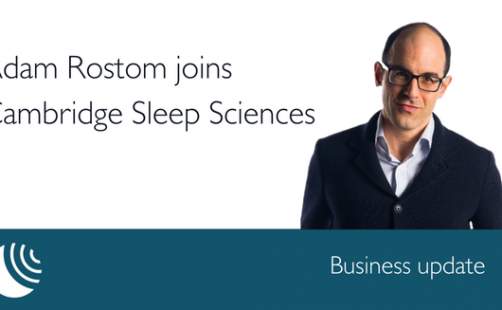The development of Cambridge Sleep Sciences’ SleepEngine™ technology was founded on the scientific principal that sound can influence our brain activity. In this article, we explore how sound has been used throughout human history for therapy, and the science behind the amazing connection our brains have with sound in all its’ formats.

Sound therapy - drawing on historical evidence for modern techniques
We’ve all experienced the healing power of sound, whether we realise it or not. It is that feeling of calm listening to rainfall as we drift off to sleep, it is the euphoria as we hear our favourite song on the radio, it is the inner peace we feel as we hear the birdsong first thing in the morning. Our mother’s voice, the sound of a well-played cello, the wind in the trees. It is no accident that most of us experience these things as calming, inspiring or energy-inducing.
Colin Aston-James is an expert in the science of sound and is the creator of the SleepEngineTM technology.

“Sound is a very powerful and effective means of changing brain state and improving mood. It is understood that low frequency sounds are linked to relaxing brain states, while higher frequencies encourage alertness and focus. When we combine the right sounds in the right way, we can train the brain to behave in more effective ways to suit our needs."
Professions in the healing sector understand this strong sound/brain connection, and have long used sound to create the perfect environment for connecting with our bodies and improving our health.
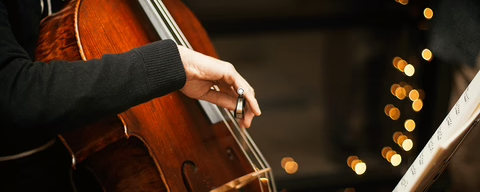
What is Sound Therapy?
In modern times we have described the use of sound as a healing force through the term Sound Therapy. The concept revolves around the idea that a person can feel mentally, physically and emotionally unwell when their “life vibrations” are out of balance. Sometimes this disharmony is caused through injury or stress and is exhibited through a number of physical and mental ailments including insomnia, allergies and even physical pain. Using sound waves to counter this imbalance is thought to achieve harmony and bring about healing.
Some forms of sound therapy direct sound waves at certain parts of the body, in a similar way to acupressure – taking advantage of the fact that sound waves travel through the water in the body at 4 times the speed it travels through the air. These sound waves can be created in several ways, but often tuning forks, chanting bowls or even electronic equipment are used. Some therapies are also designed to create harmony between the left and right brains, while others aid in the practise of meditation – forming part of a religious or spiritual experience.
The benefits of these treatments are thought to help with conditions such as stress, anxiety, high blood pressure, depression and autism. Certain types of music therapy have also been used to treat more specific conditions such as Alzheimer’s, ADHD and Chronic Fatigue Syndrome. Other sound therapies are also encouraged for women in labour, such as hypnobirthing and the use of repetition of positive affirmations. And also for those undergoing treatments such as chemotherapy - for their relaxing and calming effects. With no known side effects, these treatments are effective and safe.
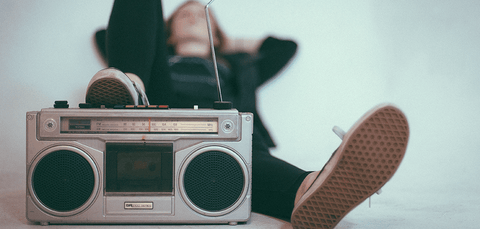
The history of sound in a religious context
These days we can physically see how the brain lights up when listening to different sounds while undergoing an MRI. In ancient times, however, sound was recognised to elicit altered states and emotional responses that were harnessed to improve health and wellbeing. This began as soon as humans interacted with each other. The use of sound as a healing technique is as old as recorded history and is mentioned in the oldest spiritual texts. The creation story talks of a boom and ancient rituals often involve chanting and drumming to bring about emotionally charged states.

Most of us are probably aware of the Tibetan or Himalayans healing singing bowls known as rin gongs or suzu gongs. These are widely used in mindfulness practises and yoga studios or as part of Buddhist rituals. These bowls are thought to have ancient histories; however tradition tells us that ancient Tibetans were much more likely to have used bells and chimes, rather than bowls during their religious ceremonies. The bowls used today are a more modern interpretation of these sound-creation techniques.
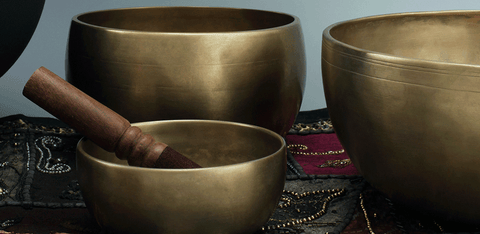
Christianity has also long embraced sound as part of its tradition. In the Bible we hear “In the beginning was the Word” and “make a joyful noise unto the Lord”. It is also thought that cathedrals and churches were designed to create an acoustic opportunity to talk to God – literally enhancing the singing and chanting to a more spiritual level. Yet, these spaces are also designed for quiet reflection and silence.
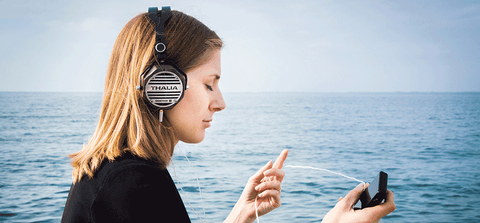
Use of sound in a healing context
The first known use of music as a healing force comes from the Australian Aborigines who are known to have used the didgeridoo as a healing tool for more than 40,000 years. Yogic and Chinese traditions also use certain spoken sounds known as “bija” as part of their chants, mantras and meditations on different body parts. Chanting is particularly powerful in healing. It is thought to create an opiate effect in the body that can help to overcome mental and physical pain and injury.
The Greeks were also known to use music to heal. Pythagoras is usually credited as a mathematician; however, he was also known as the Father of Music. He discovered the beauty of harmonic intervals as a mathematical concept, bringing together the idea of certain sounds creating a pure and understandable sensation that could, in his words, create “Soul Adjustments”. He used his harmonies to elicit sleep for his disciples when needed and energy when required through different musical arrangements that were considered to be Divine.
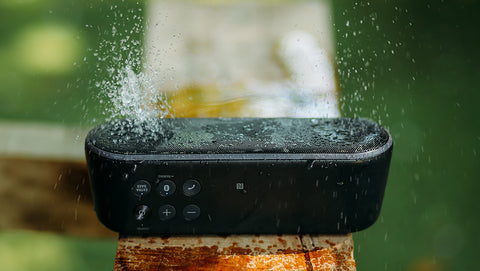
Moving forward to more recent times, in 1896 American doctors first found a connection between sound and healing when they noted that music could improve blood flow and improve thought processes. Music therapy was also used during the 1940’s to rehabilitate soldiers returning from WWII.
This led on to sound wave therapy that was developed from the 1950s by pioneer British Osteopath Sir Peter Guy Manners. He developed the first machine designed to produce sound vibrations for healing. Placed directly over the part of the body that required treatment and set to match the vibration frequency of healthy cells for that region, it was thought to return the cells to a healthy state. By the 1990’s Manners had developed the first computerised system to treat a range of conditions. This was followed by Dr Alfred Tomatis and Dr Guy Berard who created auditory integration therapy designed to improve a range of issues including anxiety and learning disabilities.
More recently, science is starting to codify some of these ancient and modern techniques through studies that look into how sound can heal. Most focus on how “feel good” chemicals are produced in the reward centres of the brain when listening to music or certain sounds. This study is in its infancy, however anecdotally most of us can easily attest to this being the case.
Treatment of ailments via sound is known historically and in a more contemporary sense. We are only now beginning to understand the mechanism that results in real change for our mental and physical wellbeing. But our ancestors understood the outcomes as well as we do. Sound results in changes that they may not have understood or been able to explain – but it certainly works.

How these principles were used in the development of the SleepEngineTM technology
The SleepEngineTM technology uses neuroscience and exclusive sound technology to help improve the quality of sleep. Our researchers investigated how soundwaves can influence our brain activity, even when we’re asleep. By developing scientifically engineered soundwaves at the right frequencies and in a programmed order, they discovered it was possible to guide our brain through a textbook sequence of sleep cycles and sleep stages.
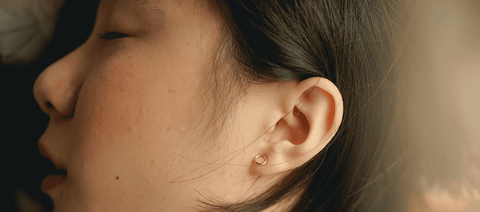
Hearing vs Listening
For the SleepEngineTM technology to be effective at guiding us through healthy sleep cycles, we don’t even need to listen to the sound - the soundwaves just need to be received by our brain via the auditory pathways.
Colin Aston-James recalls the early development stages of the SleepEngineTM technology; “We started out using sounds from singing bowls and pan pipes which sounded lovely, but people were actually listening to those sounds. So we started using pure tones - it has to be as boring as possible so people don’t actually listen to it. The sound needs to disappear into the background for it to be effective.”
He adds, “We're only just beginning to uncover some of the health benefits of carefully crafted sounds. By harnessing the brain’s natural response to certain sound frequencies, the SleepEngineTM technology guides the brain through good quality sleep cycles in the correct order, thus helping with falling asleep, staying asleep and waking feeling refreshed.”
The first application of the SleepEngineTM technology was in the ground-breaking SleepHub® Home product - a bedside sleep aid which delivers the SleepEngineTM sounds using a pair of premium speakers and controlled by a high quality 7” LCD touch screen. However, the potential of the technology is now starting to be realised through the development of licensing opportunities with a range of leading brands in the bedding, audio and hospitality sectors, where the technology is embedded into products or streamed wirelessly, to deliver the scientifically developed sleep sounds.
To learn more about opportunities to integrate the unique SleepEngineTM technology into your product offerings, please contact us for an initial discussion.
